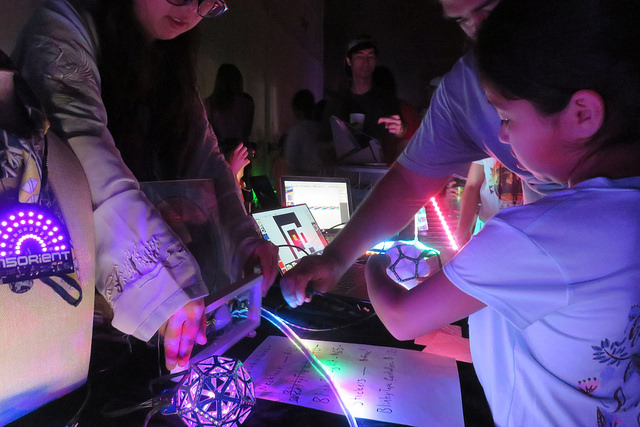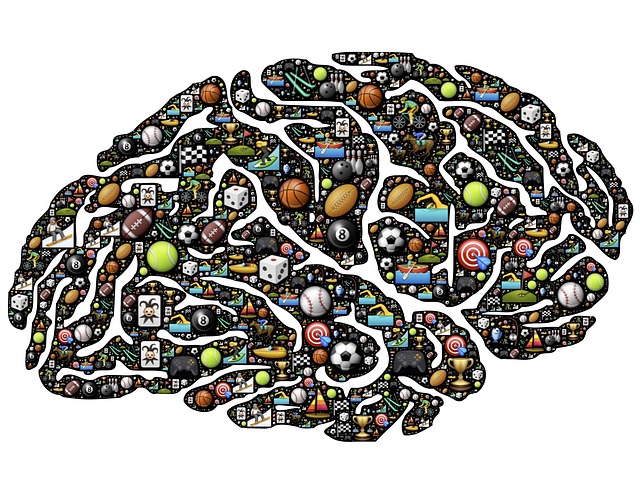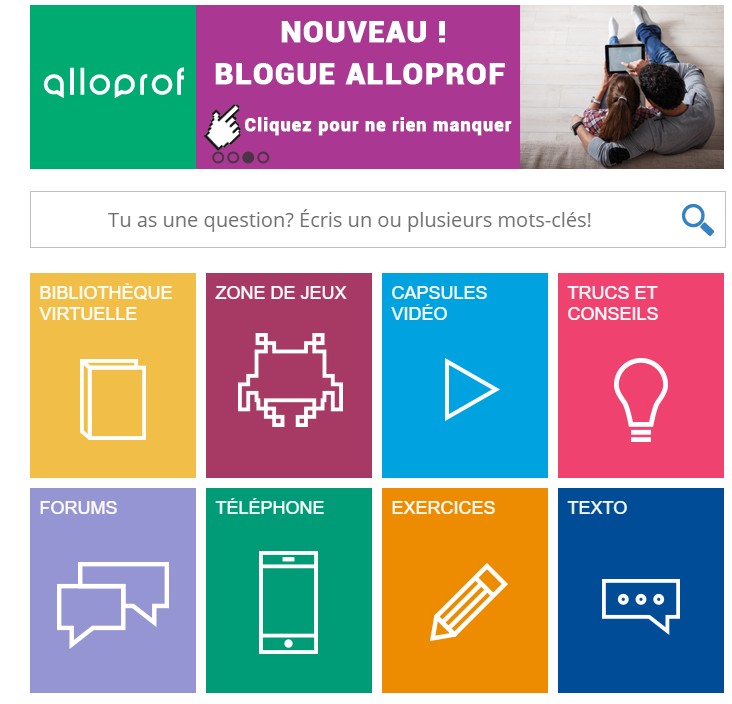Les jeux vidéo sont une forme de technologie particulièrement populaire et répandue. Le but de ce dossier est de proposer des pistes de réflexion et des conseils aux enseignants qui souhaiteraient les intégrer efficacement à leur enseignement.
par Mikaël Roberge
Université de Sherbrooke, auteur d’un mémoire sur Minecraft et d’un cours de deuxième cycle intitulé « Jeux vidéo en enseignement-apprentissage »
image : “Maker Faire 2017” (CC BT-SA 2.0) by fabola
Un dossier conjoint de Carrefour éducation et L’École branchée
Le texte de ce dossier est disponible en format PDF. Cliquez pour télécharger.
Il est disponible en format OpenOffice/LibreOffice. Cliquez pour télécharger.
L’essor des technologies de l’information et de la communication (TIC) des dernières années a assurément transformé la manière d’enseigner. Les contextes sociaux et économiques ayant eux-mêmes subi des changements importants, il est normal que le domaine de l’enseignement suive la cadence.
L’OCDE parlait déjà au tournant des années 2000 d’une société de plus en plus connectée où l’échange d’information et de connaissances est la clé du développement social et économique. Depuis quelques années, nous avons assisté aux effets que peuvent avoir ces technologies dans notre société. Nous n’avons qu’à penser à la facilité de communication que permet Facebook, aux possibilités de diffusion offertes par YouTube, sans parler des sites de ventes en ligne comme Amazon. Loin d’être les seules plateformes, celles-ci ont néanmoins eu des impacts considérables sur notre quotidien.
Les jeux vidéo sont aussi une forme de technologie particulièrement populaire et répandue. Le but de ce dossier est de proposer des pistes de réflexion et des conseils aux enseignants qui souhaiteraient les intégrer efficacement à leur enseignement. Bien que le sujet principal soit les jeux sérieux, nous traiterons également d’autres moyens d’intégrer les jeux numériques en classe.
Table des matières
- Jeux vidéo, jeux sérieux, ludification? Démêler les principaux termes
- Ce qui distingue les jeux vidéo des jeux sérieux
- La ludification
- Pourquoi utiliser le jeu numérique en classe?
- Les bienfaits de l’apprentissage par le jeu
- Les jeux numériques et leurs avantages
- Comment intégrer les jeux sérieux en classe?
- Par quoi commencer : détermination des objectifs d’apprentissage
- Quoi anticiper : organiser la classe, étayer la tâche
- Quoi évaluer : les traces du jeu
- Quelques exemples de jeux sérieux pour la classe
- Des jeux sur le Web
- Café des MATHadore (TFO)
- Ta parole est en jeu (Université de Moncton, Office national du film)
- Vivre au temps des châteaux forts (Canopé Académie de Caen)
- Des applications
- DragonBox Algebra 5+ (WeWantToKnow AS)
- La suite d’applications de Domino Création
- Slice Fractions (Ululab)
- Autres sites intéressants pour les jeux
- Site du CCDMD (Centre collégial de développement de matériel didactique)
- Alloprof
- La souris-web
- Socrative
- Des jeux sur le Web
- Utiliser des jeux vidéo commerciaux en classe
- Des exemples
- Minecraft
- SimCity
- Civilization
- Faire émerger les savoirs
- Des exemples
- La création de jeux vidéo à l’école : une activité interdisciplinaire
- Conclusion
- Références
Jeux vidéo, jeux sérieux, ludification? Démêler les principaux termes
Bien que l’on ne mentionne pas spécifiquement le jeu sérieux dans les programmes de formation de l’école québécoise lorsqu’on présente les TIC, précisons que le jeu sérieux peut tout de même être considéré comme une TIC. Selon l’OCDE, les jeux vidéo, qu’ils soient sérieux ou commerciaux, sont des TIC au même titre que des programmes informatiques, des médias audio et visuels et autres sites Web. On entend parler de ludification de l’enseignement ou de gamification en anglais; est-ce un synonyme de jeux sérieux? Nous verrons ici certaines distinctions.
Ce qui distingue les jeux vidéo des jeux sérieux
Le terme même, « jeu sérieux », constitue en quelque sorte un oxymore. D’une part, on compte l’aspect amusant, frivole du « faire semblant »; d’autre part, l’austérité et l’exigence du « pour de vrai ». Jeu sérieux, ne nous méprenons pas, ne devrait pas être synonyme de jeu éducatif, car tous les jeux ont un potentiel éducatif; nous en traiterons dans le chapitre suivant. Ce n’est pas parce qu’on ajoute le terme « sérieux » à « jeu » que celui-ci permet l’apprentissage. Tout comme on peut apprendre en jouant à un jeu vidéo commercial, il est possible de ne rien apprendre en jouant à un jeu sérieux.
La véritable distinction entre les jeux sérieux et le jeu vidéo repose dans l’intention derrière les objectifs du jeu. Dans le cas des jeux sérieux, il y a une intention pédagogique. En d’autres mots, dans la conception même du jeu sérieux, on vise à mener l’utilisateur à développer de nouvelles compétences, exercer certains savoir-faire, amener à considérer de nouvelles perspectives, etc. Bref, les visées de ces jeux sont souvent très similaires à celles poursuivies en classe et les contenus similaires à ceux présentés dans les guides de formation. C’est en ce sens qu’ils sont particulièrement intéressants, ciblant bien les contenus tout en favorisant l’engagement. Dans le cas des jeux vidéo commerciaux, on se centre beaucoup plus sur l’expérience vécue par le joueur. Évidemment, il y aura tout de même des apprentissages réalisés, mais ceux-ci ne seront pas nécessairement compatibles avec ceux de l’école. Par exemple, le joueur de Mario Bros apprend assez rapidement que s’il n’accélère pas assez avant de sauter, son personnage ne pourra passer de l’autre côté du ravin. Toutefois, ce même jeu peut très bien servir d’introduction aux concepts d’accélération et d’énergie cinétique en physique avec un enseignement qui va en ce sens. Un jeu vidéo commercial peut tout à fait permettre l’apprentissage avec un bon accompagnement, même si les contenus ne sont pas au cœur de la conception du jeu. Nous traiterons des possibilités autres que celles liées aux jeux sérieux dans un prochain chapitre. Notez que dans ce dossier, nous utilisons le terme jeu numérique pour désigner à la fois les jeux vidéo commerciaux et les jeux sérieux.
La ludification
Peut-être avez-vous déjà entendu parler de ludification de l’enseignement. Le terme ludification n’est pas propre au domaine de l’enseignement; en fait, il est issu du domaine du marketing et désigne des logiques visant à améliorer l’expérience de consommation. Les cartes de fidélité, les systèmes de points et la monnaie d’un commerce sont des principes de ludification au sens marketing qui visent à favoriser la consommation dans un lieu donné. Pour ce qui est du domaine de l’éducation, nous pourrions dire que la ludification est l’ajout de mécaniques ludiques à un cadre éducatif afin de le rendre plus attrayant. Bien que la ludification s’apparente au système d’émulation (système de points, récompenses, conséquences, etc.), il est à ne pas confondre avec le simple système d’émulation qui est beaucoup plus près de son homonyme du monde du marketing. La ludification se veut l’intégration à l’enseignement de différentes postures (règles, rôles, actions, etc.) et d’artéfacts (système de points, objets servant au jeu, jeux vidéo, etc.) visant à ajouter une touche ludique à une situation qui ne l’est pas forcément au départ.
Pour donner un exemple concret, un enseignant qui utiliserait un jeu de société tel un jeu-questionnaire pour évaluer les connaissances chez ses élèves déploierait des principes de ludification, car il intègrerait des règles et des actions sous forme de jeu à un contexte qui n’est pas forcément un jeu au départ. Donc, on peut intégrer des principes de ludification sans nécessairement utiliser la technologie.
Pourquoi utiliser le jeu numérique en classe?
Qu’il soit vidéo ou sérieux, est-ce bien légitime d’utiliser le jeu en classe? En quoi l’aspect frivole du jeu est-il compatible avec le but poursuivi par l’école? Ce n’est pas parce qu’on associe le jeu à un passe-temps qu’il est une activité vide de sens, bien au contraire; les jeux en général sont des activités pouvant être très profitables dans un contexte d’enseignement.
Les bienfaits de l’apprentissage par le jeu
Les bienfaits du jeu ne se limitent pas seulement à un défoulement lors de la récréation et de l’heure du dîner. Le jeu a un rôle essentiel dans un développement sain, et l’UNESCO reconnait d’ailleurs le jeu comme un droit fondamental de l’enfant. Le jeu est généralement bien vu dans le milieu scolaire et on l’emploie surtout au préscolaire et au primaire. Toutefois, on tend à le délaisser dans l’enseignement secondaire et post secondaire. Pourtant, que l’on soit bambin, adolescent ou même retraité, le jeu est un fantastique moteur d’apprentissage et de développement. Le jeu est une activité nécessitant un haut niveau d’engagement cognitif de la part des participants qui doivent déployer différents savoirs pour progresser. Placer des blocs selon un ordre précis et en suivant certaines règles ou déjouer son adversaire en plaçant correctement ses pièces sur un tableau de jeu sont des exemples de tâches ludiques qui requièrent des savoirs bien précis. Il s’agit d’un contexte où il est permis aux participants d’expérimenter des pistes de solutions, de découvrir de nouvelles façons de faire et même d’échouer sans trop de conséquences. Il est nécessaire pour le joueur de comprendre et de suivre les règles pour arriver à bien s’autoréguler.
Il s’agit parfois de tâches bien complexes, nous n’avons qu’à penser au haut niveau de concentration et aux calculs que nécessite le jeu d’échecs. La complexité des jeux peut être comparable à différentes tâches académiques que nous proposons aux élèves. Ainsi, en choisissant les bons jeux, il est possible d’atteindre des objectifs comparables à ceux visés par les tâches traditionnelles. Dans le cas des jeux sérieux, les objectifs établis sont généralement cohérents avec ceux de l’école, que l’on parle de savoirs essentiels ou de compétences transversales. Ces jeux sont donc particulièrement intéressants à utiliser en classe.
Les jeux numériques et leurs avantages
Quel est votre rapport au jeu vidéo? Peut-être consommez-vous ce type de média, peut-être n’y connaissez-vous à peu près rien. Quoi qu’il en soit, on le voit, on le constate, à la maison comme en classe, plusieurs élèves pratiquent le jeu vidéo ou du moins, en parlent. Selon des statistiques américaines, jusqu’à 91 % des enfants de 2 à 17 ans joueraient aux jeux vidéo sur une base régulière (NPD group, 2011). Aujourd’hui, environ 80 % des ménages américains possèderaient des consoles de jeux ou des jeux sur leur ordinateur.
Ces jeux qui occupent une place déjà importante à la maison devraient-ils aussi avoir leur espace à l’école? Les avis sont partagés. Alors que certains sont pour des approches moins « surstimulantes », d’autres voient le jeu vidéo comme une activité de laquelle peuvent découler plusieurs apprentissages. C’est aussi une bonne façon d’actualiser certaines méthodes d’enseignement à l’aide d’un média significatif pour les élèves.
Quoi qu’on en pense, l’apprentissage par le jeu numérique (en anglais, Digital game based learning) est un moyen d’enseigner qui intéresse autant les chercheurs des sciences de l’éducation que les acteurs des milieux éducatifs. On voit le jeu numérique comme un outil détenant un potentiel unique. En effet, par sa nature, il s’adapte à celui qui l’utilise, offrant ainsi plusieurs opportunités que les méthodes traditionnelles ne permettent pas nécessairement. L’utilisateur du jeu numérique est beaucoup plus actif si on le compare à d’autres médias, comme les livres et les vidéos, dans lesquels l’information est « simplement » présentée. En effet, dans les jeux numériques, les joueurs ont la possibilité d’interagir avec l’information.
L’utilisateur pose des actions qui ont des répercussions et reçoit une rétroaction immédiate du jeu. De plus, les jeux sont généralement conçus avec un niveau de difficulté progressif faisant en sorte que l’utilisateur est constamment mis au défi. Cependant, s’il n’a pas atteint un niveau de maîtrise nécessaire au jeu, il aura l’occasion de recommencer.
D’ailleurs, le jeu permet d’expérimenter, de faire des essais et même de se tromper sans trop de conséquences. Comme le jeu est une activité frivole, l’échec n’a pas le même impact que dans d’autres circonstances; pour ainsi dire, perdre ou échouer fait partie du jeu. Il suscite également de vives émotions, affectant du coup la perception de l’élève face à la tâche. En effet, les émotions que l’on ressent lors de la réalisation d’une tâche ont un impact sur le sentiment d’auto-efficacité, c’est-à-dire la manière dont on se sent compétent et motivé face à une tâche. Comme ce sentiment peut à son tour influencer les émotions éprouvées lors de la réalisation d’une tâche, les jeux en général s’avèrent une bonne façon de favoriser la motivation face à une matière donnée.
En résumé, plusieurs méthodes ou façons de faire connues depuis longtemps comme étant bénéfiques dans l’enseignement sont présentes dans les jeux numériques : proposer des tâches variées, offrir des choix et du contrôle sur la tâche, donner une rétroaction rapide, laisser la possibilité de faire des erreurs, favoriser la motivation, etc. Ne serait-ce que pour ces raisons, l’utilisation du jeu numérique en classe est tout à fait légitime.
Comment intégrer les jeux sérieux en classe?
La présente section traite des principaux éléments à considérer lorsqu’il est question d’intégrer le jeu sérieux à la classe. Dans ce survol, nous explorerons différentes pistes visant à guider la réflexion à travers les étapes avant, pendant et après le jeu.
Par ailleurs, un rapport d’études menées auprès d’environ 500 enseignants de différents pays utilisant les jeux numériques en classe a révélé que les principales difficultés éprouvées sont d’arrimer les jeux aux contenus, le manque de matériel informatique, l’organisation du temps et le coût des jeux. Nous présentons donc quelques recommandations afin de guider celles et ceux qui voudraient intégrer les jeux sérieux en classe tout en évitant certains de ces pièges.
Par quoi commencer : détermination des objectifs d’apprentissage
En classe, lorsqu’on utilise un jeu sérieux, il est impératif, comme pour n’importe quelle autre activité, d’avoir en tête des objectifs d’apprentissage précis. Comme ce sont ces objectifs qui dictent la nature de la tâche ainsi que l’accompagnement de l’enseignant, il importe qu’ils soient bien établis dès le départ. Une activité qui vise à explorer la contribution des grands mathématiciens de l’histoire risque de ne pas être menée de la même façon qu’une activité qui vise à décoder des éléments clés d’une situation de résolution problème et utiliser les bons processus mathématiques.
Il faut une bonne connaissance des jeux utilisés afin de savoir quels savoirs disciplinaires et quelles compétences transversales sont travaillés dans ces jeux. Il est important pour un enseignant de bien connaître le matériel qu’il utilise avec ses élèves, et cela en va de même lorsque ce matériel est un jeu. Sans nécessairement y avoir passé des jours entiers, il faut avoir moindrement essayé le jeu pour savoir comment y jouer et connaître sa jouabilité. Ainsi, il devient beaucoup plus facile de déterminer si les objectifs du jeu sont compatibles avec les objectifs de classe, donc si le jeu est pertinent dans un contexte donné. Il est à noter que certains jeux sérieux présentent assez clairement les savoirs qui sont mis en pratique, facilitant ainsi le travail de l’enseignant. Cette première étape demande évidemment de connaître certains jeux; on peut donc dire qu’il y a une étape préalable à cette première étape. Pour vous aider à trouver des jeux sérieux qui répondront à vos besoins, nous dressons une liste de jeux et de sites de jeux dans le prochain chapitre.
Il faut également connaître les artéfacts ludiques qui sont déployés dans le jeu. Tout jeu numérique a un design qui vise à faire vivre au joueur une expérience précise. On parle alors de jouabilité, adaptation du terme anglais gameplay. Par la jouabilité, on entend à la fois la manière de jouer, les règles, les objectifs à atteindre ainsi que les actions nécessaires pour progresser dans le jeu. Il faut être conscient de ces éléments, car ce sont eux qui rendent le jeu intéressant et motivant. Selon les recherches, différentes composantes de la jouabilité rendent le jeu numérique particulièrement engageant :
- Le jeu permet aux joueurs d’interagir et de socialiser entre eux, que ce soit dans un objectif de collaboration ou de compétition (Lenhart, 2008);
- Le jeu permet une stimulation sensorielle (images, musique, actions, etc.) ou émotionnelle (présence d’une trame narrative, personnages intéressants, etc.) (Tisseron, 2013);
- Le jeu permet l’interaction avec ses composantes (lieux, objets, personnes, etc.), la liberté de manipulation, la simulation d’un élément de la vie réelle ou encore la résolution de problème (Hamlen, 2013);
- Le jeu présente une progression (faire progresser un personnage, présence de niveau, construction, etc.) (Hamlen, 2013).
Généralement, plus il y a de composantes présentes, plus on a de chance que le jeu sollicite l’intérêt. Il est important de se poser des questions comme : quelles composantes de la jouabilité sont présentes? Quelle sera l’expérience vécue par les élèves? Quels effets les éléments du jeu auront-ils sur l’élève? Que doit réaliser l’élève comme tâche? Comment cela permettra-t-il d’atteindre les objectifs d’apprentissage? Il pourrait être intéressant de réfléchir à ces questions en se familiarisant avec les jeux choisis.
Quoi anticiper : organiser la classe, étayer la tâche
Une fois que l’on a clarifié les objectifs, il faut penser à la manière dont le jeu sera intégré à la classe. Pour ce faire, il faut bien entendu réfléchir à l’espace et au moment où le jeu sera utilisé. Quel est le matériel technologique à disposition? Est-ce qu’une familiarisation avec le jeu est nécessaire? Comment accède-t-on au jeu? Comment la manipulation du jeu s’effectue-t-elle? Y a-t-il des tâches connexes au jeu (noter le nombre d’erreurs ou le score final, par exemple)? Voilà quelques questions d’ordre organisationnel qui peuvent paraître simples, mais sur lesquelles il est important de réfléchir avant de débuter afin d’éviter des déraillements.
Par la suite, les paramètres choisis de l’activité doivent être clairement exposés aux élèves, avant même de début de celle-ci, autant que possible. Comme certains jeux sont particulièrement immersifs, il peut être plus difficile d’avoir le même niveau d’attention de la part des élèves en cours de jeu.
Bien que le jeu soit un outil très intéressant à utiliser en contexte d’apprentissage, le fait que l’élève joue et avance bien ne veut pas nécessairement dire que l’élève apprend. Il est important de rappeler que le jeu n’est en aucun cas un substitut de l’enseignant; il demeure une tâche proposée par ce dernier. Au même titre que d’autres activités, l’enseignant doit étayer son activité pour répondre aux besoins spécifiques de ses élèves.
Il faut, entre autres, réfléchir au niveau actuel des élèves, ce qu’ils connaissent et comprennent des notions qui seront abordées. Sachant cela, il faut que le jeu en question offre un défi intéressant, ni trop facile ni trop difficile cognitivement. Rappelons ici le principe de la zone proximale de développement, un principe souvent évoqué en éducation, selon lequel une tâche trop facile entraine l’ennui, alors qu’une tâche trop complexe amène un stress et le désengagement.
Les jeux sont normalement construits avec un niveau de difficulté progressif, s’adaptant à celui de l’élève; ils lui apportent de l’aide lorsqu’il éprouve des difficultés ou augmentent la complexité pour garder un défi intéressant. Si l’enseignant juge que le jeu ne s’adapte pas suffisamment bien à l’élève, il peut toujours intervenir à l’extérieur du jeu pour adapter lui-même la tâche. Par exemple, il pourrait créer une fiche d’aide sur papier pour aider l’élève si le jeu est trop difficile, ou demander de réaliser une tâche dans un temps limité pour augmenter le défi si l’élève a trop de facilité. D’autres actions peuvent être posées dans le même but en fonction de la nature du jeu, comme fixer un seuil minimal de points à atteindre en une partie, exiger de réussir sans perdre de vie, faire débuter l’élève à un niveau de difficulté supérieur, etc. Cela varie évidemment en fonction de la nature du jeu.
Quoi évaluer : les traces du jeu
Dans son livre What Video Games Have to Teach Us About Learning and Literacy, James Paul Gee explique en détail la nature de l’évaluation dans un jeu vidéo, qui diffère de l’évaluation classique. Il présente entre autres que dans les jeux numériques, il n’y a pas vraiment d’évaluation sommative tels les tests et les examens auxquels nous sommes habitués dans le milieu scolaire. La raison est relativement simple : les jeux n’ont pas besoin de moments précis pour réaliser une évaluation étant donné que le joueur est constamment évalué.
Contrairement à l’encadré blanc d’une feuille d’exercices sur lequel il est inscrit « laisse les traces de ta démarche », l’évolution de l’élève à travers le jeu laisse immanquablement des traces à partir desquelles il est possible d’avoir une idée du niveau de connaissance ou de maîtrise d’une notion. La nature des traces laissées varie en fonction du jeu lui-même et peut prendre la forme d’un pointage, d’un niveau atteint, de nombre d’erreurs commises, etc. Il peut aussi y avoir plusieurs types de traces pour un seul et même jeu. L’enseignant peut établir au préalable les traces qu’il souhaite garder et qui témoignent du niveau de compréhension des élèves. L’enseignant pourrait, par exemple, noter le niveau atteint ou le temps requis pour réaliser une tâche.
Quelques exemples de jeux sérieux pour la classe
Nous rassemblons ici certains jeux sérieux qui pourraient être intéressants pour différentes matières. Nous présentons à la fois des jeux complets et des sites offrant une multitude de jeux. Notez que bien que la plupart soient gratuits, il peut être nécessaire de débourser pour certains.
Des jeux sur le Web
Café des MATHadore (TFO)
Mathématique
Quatre petits jeux liés à autant de différents concepts de mathématiques permettant la manipulation liée au diagramme de Venn, aux frises, à la monnaie et aux fractions. Il est possible de varier le niveau de difficulté pour chacun de ces jeux.
Science en jeu (CREO)
Mathématique, science et technologie

Ta parole est en jeu (Université de Moncton, Office national du film)
Français (Langue d’enseignement et langue seconde), géographie
Une série de jeux de type puzzle (devinettes) vise à permettre la découverte de la richesse du vocabulaire et de la culture francophone du Canada. Ces jeux sont intéressants pour découvrir de nouveaux mots ainsi que des expressions colorées, en plus de visiter une multitude de régions.
Vivre au temps des châteaux forts (Canopé Académie de Caen)
Histoire
Aussi offert sur : Google Play, App Store
Ce jeu de type simulation propose un environnement en trois dimensions répliquant une citadelle du 12e siècle. Il peut être intéressant pour un enseignant de se déplacer dans cet environnement avec ses élèves pour découvrir cette structure médiévale. Une fonctionnalité permet au joueur de faire une chasse au trésor, le menant à découvrir la façon de vivre de l’époque.
Des applications
DragonBox Algebra 5+ (WeWantToKnow AS)
Mathématique
Offert sur : Microsoft Store, Google Play, App Store
Le jeu Dragon box est un jeu de type puzzle très coloré qui permet la manipulation d’équations algébriques. Toutefois, plutôt que de manipuler des chiffres, des lettres ou des opérations, le joueur manipule d’abord de petites dalles comportant des pictogrammes selon des logiques algébriques. Le but est d’isoler la boîte, l’inconnue, en balançant chacun des côtés du tableau. Au fur et à mesure que le niveau de difficulté augmente, les puzzles proposés intègrent de plus en plus de signes et logiques algébriques.
La suite d’applications de Domino Création
Français
Offert sur : App Store
Ces applications (Lecto, Ludik, Mixo, Orthografix, PhonoFolie, Planète Pronoms) proposent différentes tâches ludiques liées à l’apprentissage de la langue orale et écrite. Dans plusieurs cas, il est possible de structurer des tâches plus spécifiques pour cibler certaines difficultés.
Slice Fractions (Ululab)
Mathématique
Offert sur : Google Play, App Store
Le jeu Slice Fractions est un jeu de type puzzle dans lequel on demande au joueur de manipuler des environnements en deux dimensions en coupant différentes formes. Le but du jeu est de permettre à un petit mammouth d’avancer dans chaque niveau en taillant de façon spécifique les rochers et glaciers pour ouvrir un passage. Le jeu permet à l’utilisateur de manipuler les fractions de façon très dynamique et ludique.
Autres sites intéressants pour les jeux
Site du CCDMD (Centre collégial de développement de matériel didactique)
Français
Déjà connu de plusieurs, le site regorge de matériel visant l’amélioration du français écrit. Il y a une section « jeux pédagogiques » qui comporte des jeux variés pour pratiquer différentes dimensions de la langue.
Alloprof
Un autre site bien connu qui propose aussi près d’une dizaine de jeux pour le français, les mathématiques et la géographie.
La souris-web
Le site lasouris-web.org est un répertoire d’activités et de jeux pour l’ensemble des matières du primaire et du secondaire. Les sujets sont organisés par matière, ce qui facilite grandement la recherche.
Socrative
Offert sur : Google Play, App Store
Ce logiciel vous permet de concevoir vous-même vos jeux-questionnaires. Certaines options vous donnent la possibilité d’ajouter une touche ludique à vos questionnaires. Socrative est également offert sur tablette et téléphone intelligent.
Game for a change
Game for a change est un organisme qui vise à regrouper différents jeux à caractère social et environnemental. On ne vise pas le français ou les mathématiques, mais davantage le développement personnel et la prise de conscience civique.
Utiliser des jeux vidéo commerciaux en classe
Le jeu, nous l’avons vu, n’a pas besoin d’être éducatif pour permettre l’apprentissage; le jeu en général est un excellent moteur d’apprentissage. Une option aux jeux sérieux en classe est l’utilisation des jeux commerciaux.
Selon l’étude How are digital games used in school?, menée auprès d’enseignants de différents pays européens, les jeux vidéo commerciaux sont généralement préférés aux jeux sérieux, étant plus polyvalents et moins ennuyeux, selon eux.
En effet, certains jeux sérieux sont justement trop sérieux, perdant de vue la dimension ludique. Isabela Granic, auteure qui s’intéresse aux jeux numériques en enseignement, utilise la métaphore du « brocoli enrobé de chocolat » pour désigner les jeux qui paraissent bien à l’extérieur, mais qui sont, en quelque sorte, des cahiers d’exercices déguisés.
Cela étant dit, l’utilisation de jeux commerciaux en classe requiert un peu plus d’accompagnement. Rappelons que l’intention première de ces jeux n’est pas pédagogique, il revient donc à l’enseignant de mettre en relief les apprentissages et savoirs pertinents dans le jeu. Tout de même, il existe plusieurs excellents jeux dont les contenus peuvent être réutilisés par l’enseignant. Voici maintenant certains jeux qui sont particulièrement intéressants en ce sens. Notez que pour ces jeux commerciaux, une version « Edu » destinée aux classes est également offerte (ou le sera bientôt).
Minecraft
Aussi offert sur : Google Play, App Store, Xbox One et PS4
Minecraft est probablement le jeu le plus utilisé à l’école à travers le monde. Depuis la sortie de sa version éducative en 2016, MinecraftEdu, il est encore plus facile de l’utiliser en classe. Ce jeu est de type « bac à sable »; c’est en quelque sorte un jeu de Lego virtuel dans lequel le joueur peut construire et manipuler son environnement comme bon lui semble.
Bien que les mathématiques, les sciences naturelles et la géographie soient les matières les plus faciles à exploiter dans le jeu, pratiquement toutes les matières peuvent être travaillées avec un peu de créativité de la part de l’enseignant. Comme le jeu est très malléable, un enseignant peut aisément travailler la géométrie en demandant à ses élèves de reproduire leur école à l’échelle ou demander de créer un guide d’accompagnement du jeu pour travailler le texte descriptif. Il n’y a pas de notions au préalable dans le jeu, c’est l’enseignant qui doit les faire émerger.
Tout comme un enseignant peut faire mesurer le périmètre de la classe, il peut faire mesurer celui d’une maison dans Minecraft. La différence est que les élèves ont la possibilité de faire des manipulations, comme changer la longueur d’un mur pour voir l’effet sur le périmètre et établir eux-mêmes la relation entre la longueur des côtés et le contour. De plus, le fait d’utiliser un jeu connu et apprécié contribue à rendre l’activité intéressante et significative à ceux qui s’y livrent.
SimCity
SimCity est une série comportant plusieurs titres dont les origines remontent au début des années 1990. Dans ce jeu de simulation et de gestion, il faut construire et administrer une ville avec tous ses services. Plusieurs tâches doivent être accomplies par le joueur, de l’organisation du territoire à la gestion du budget en passant par la prise en compte des plaintes citoyennes. Il s’agit là d’autant de situations de résolution de problèmes requérant des savoirs de différents ordres qui peuvent être travaillés avec les élèves. La version SimCityEdu permet de faciliter la tâche des enseignants dans l’utilisation du jeu.
Civilization
Civilization est une série de jeux dont le sixième volet a été publié en 2016 pour son vingt-cinquième anniversaire. Il s’agit d’un jeu de stratégie en temps réel dans lequel le joueur doit faire évoluer une civilisation à travers le temps. Il doit réussir à faire croître sa civilisation en prospérant sur le plan scientifique, culturel ou militaire. Comme d’autres civilisations rivales se développent rapidement, le joueur doit trouver une stratégie efficace pour ne pas se diriger vers son déclin. Comme le jeu reprend de véritables civilisations, il s’agit d’une bonne façon de voir le fonctionnement de celles-ci et revisiter les étapes importantes de leur histoire. La version CivilizationEdu pourrait être en vente à partir de l’automne 2017.
Faire émerger les savoirs
Les recommandations formulées précédemment quant à l’intégration des jeux sérieux en classe s’appliquent très bien aux jeux vidéo commerciaux. Toutefois, comme les savoirs ne sont pas au cœur de la conception du jeu, l’enseignant doit les faire émerger à travers une activité qui exploite le jeu. Par exemple, avec le jeu SimCity, on pourrait demander aux élèves d’organiser des quartiers selon des proportions spécifiques pour travailler l’aire et les fractions. Ou demander aux élèves d’écrire une lettre à leurs citoyens virtuels pour annoncer un nouveau service municipal.
L’enseignant doit s’assurer que la tâche qu’il propose permet à l’élève de faire des liens entre ce qu’il fait dans le jeu et ce qu’il apprend. Les façons d’y arriver sont multiples et ne se limitent qu’à l’imagination et à la créativité de l’enseignant.
Cependant, dans l’activité bâtie autour du jeu vidéo commercial, il est important de garder un équilibre entre les éléments ludiques et les savoirs académiques. Une activité « trop ludique », qui ne miserait pas suffisamment sur les savoirs, risque de limiter l’apprentissage de ceux-ci. À l’inverse, une activité « trop sérieuse » pourrait limiter la motivation et l’engagement.
La création de jeux vidéo à l’école : une activité interdisciplinaire
L’Organisation des Nations unies pour l’Éducation, la Science, et la Culture (UNESCO) a établi que les méthodes cloisonnées d’enseignement classiques ne répondent plus au besoin des élèves d’aujourd’hui (Tardif, 1992). L’interdisciplinarité serait une approche beaucoup plus adaptée à notre réalité de même qu’à notre façon d’apprendre (idem).
En ce sens, la création de jeux vidéo peut être une activité faisant appel à plusieurs matières, offrant ainsi cette interdisciplinarité. Les compagnies de jeux vidéo commerciaux font appel à des experts de différents domaines comme les programmeurs, les scénaristes ou les graphistes, pour réaliser les jeux populaires. Même pour des projets de moindre envergure, comme la réalisation d’un jeu dans le cadre scolaire, plusieurs domaines sont mis à contribution, offrant l’opportunité de travailler différentes matières. Les principes mathématiques dans la programmation du jeu, l’écriture d’un scénario et l’élaboration de personnages en français, ainsi que l’art à travers la conception visuelle, n’en sont que quelques exemples.
Connaissez-vous Scratch et Unity? Ce sont deux interfaces gratuites (à la base) permettant de concevoir des jeux vidéo ou des programmes.
Scratch peut très bien servir à la réalisation d’activités dès le primaire. Il s’agit d’une interface très bien faite et gratuite permettant de s’initier à la logique de la programmation. On peut y entrer des commandes pour créer, par exemple, des images interactives ou des petits jeux rudimentaires.
http://carrefour-education.qc.ca/sites_web_commentes/scratch P3, S1, S2
Plusieurs jeux commerciaux vendus à l’heure actuelle sont conçus avec Unity. Ce logiciel permet de créer des jeux simples ou complexes, en 2D ou 3D. Très polyvalent, il permet aussi de réaliser des projets de plus grande envergure; il demande toutefois un investissement de temps plus important.
L’apprentissage de la conception de jeux vidéo en contexte scolaire est quelque chose qui existe déjà au Québec. Par exemple, la compagnie de jeu vidéo Ubisoft, reconnue mondialement et bien implantée chez nous, a accompagné en 2016 des écoles secondaires dans un projet de création de jeu vidéo. Il y a également l’école secondaire du Phare à Sherbrooke, en Estrie, qui offre un cours sur la conception de jeu vidéo. Comme quoi ce genre de projet est à la portée de tous et cadre très bien avec le programme de formation de l’école québécoise.
Conclusion
Pour terminer, rappelons que bien que le jeu soit un outil très intéressant à utiliser en contexte d’apprentissage, le fait que l’élève joue et avance bien ne veut pas nécessairement dire que l’élève apprend. Il est important de rappeler que le jeu n’est en aucun cas un substitut de l’enseignant; il demeure une tâche proposée par ce dernier. Au même titre que d’autres activités, l’enseignant doit étayer son activité pour répondre aux besoins spécifiques de ses élèves.
Ceci dit, plusieurs méthodes ou façons de faire classiques en enseignement sont présentes dans les jeux numériques : proposer des tâches variées, offrir des choix et du contrôle sur la tâche, donner une rétroaction rapide, laisser la possibilité de faire des erreurs, favoriser la motivation, etc. Ne serait-ce que pour ces raisons, l’utilisation du jeu numérique en classe peut certainement constituer un atout.
Si vous désirez approfondir vos connaissances sur l’ensemble des possibilités qu’offrent les jeux numériques, la ludification et la conception de jeux en classe, nous vous recommandons le livre Jeux numériques et apprentissage de la professeure Margarida Romero. Le livre s’adresse aux différents acteurs du milieu scolaire, aux parents, de même qu’aux professionnels du domaine ludique qui s’intéressent à l’enseignement par le jeu numérique.
Références
Hamlen, K. R. (2013). Understanding children’s choices and cognition in video game play: A synthesis of three studies. Zeitschrift für Psychologie, 221(2), 107-114.
Lenhart, A., Kahne, J., Middaugh, E., Rankin M., A. Evans, C. et Vitak, J. (2008). Teens, video games and civics: Teens gaming experiences are diverse and include significant social interaction and civic engagement. En ligne : http://files.eric.ed.gov/fulltext/ED525058.pdf. Consulté le 18 avril 2017.
Tisseron, S. et Khayat, D. (2013), Étude préliminaire de validation d’un questionnaire évaluant le type d’interaction dans les jeux vidéo. Neuropsychiatrie de l’enfance et de l’adolescence, 61, p. 81–92
Granic, I., Lobel, A. et Engels R.C. (2013). The benefits of playing video games. American Psychologist, 69(1), 66-78
Tardif N. (1992). Dans L’interdisciplinarité : une voie d’avenir. Actes de colloque. Sherbrooke.



















